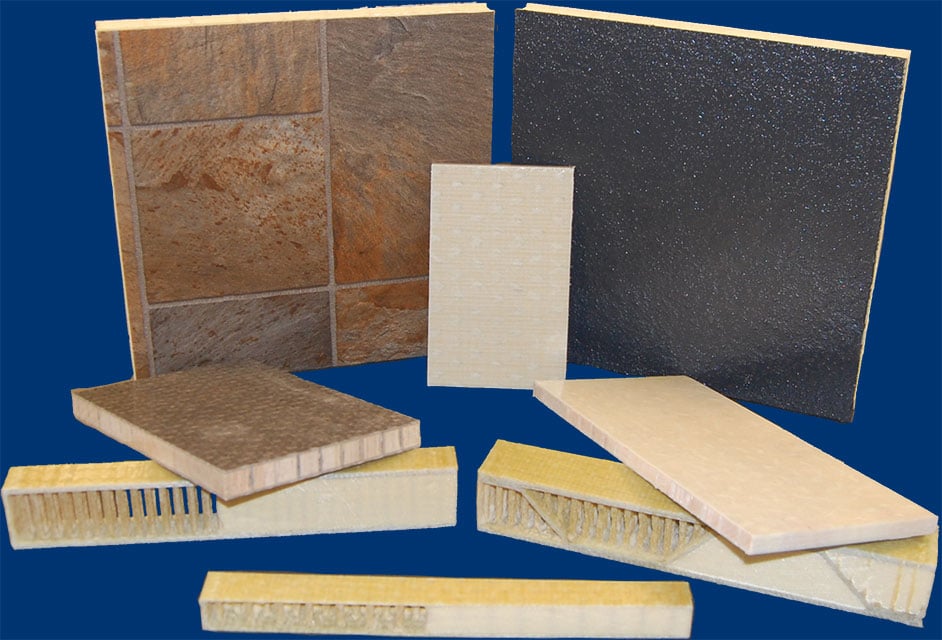 American businesswoman Martha Stewart parlayed her passion for cooking, gardening, decorating and cleaning into a $400 million business empire that has made her a household name worldwide. Her motto is "the right tool for the right job."
American businesswoman Martha Stewart parlayed her passion for cooking, gardening, decorating and cleaning into a $400 million business empire that has made her a household name worldwide. Her motto is "the right tool for the right job."
It's an axiom that could also apply to Transonite™, Creative Composite Group's (CCG) pultruded 3D Fiber Reinforced Polymer (FRP) sandwich panel. Lighter than aluminum and steel, Transonite meets the need for a cost-efficient, high-volume FRP panel that is suited to light to medium-load applications.
Computerized CNC machinery automatically deposits 3D (z-axis) fibers in a 2D laminate, converting an x-y axis laminate into an x-y-z axis composite. The patented technology's 3D insertions, called Fiber Insertions Per Square Inch (FIPSI), can be used with different core materials, reinforcements, fabrics and resins. An alternative to conventional structural and non-structural flat panel applications, Transonite can be produced in any length or width up to 8.5 ft. The manufacturing process eliminates edge seams, creating FRP panels with large, clean surfaces.
Top and bottom FRP face skins can be engineered to provide each application's desired strength and stiffness. Face skin thickness and fiber volume fractions can also be tailored. Core materials can include closed-cell polyisocyanurate, phenolic foam or end-grain balsa wood.
Delamination, a common problem with simple fiberglass/foam and fiberglass/wood panels, is eliminated. The FRP composite panel is more durable than steel corrugated panels and offers fire-resistant, insulating and acoustic dampening properties. High-volume, automated processing reduces labor costs.
Transonite is currently being sourced for ambulance sidewall and roof panels. In conventional design/builds, the body framework is typically made of formed or extruded aluminum. Outer walls are painted aluminum sheets with interior walls made with aluminum sheets covered with a vinyl coating or laminated plastic. Transonite offers a more robust option. Other uses include RV walls, roofs and floors, sound barriers, refrigerated shipping containers and pallets.
For ASTM D638 tensile strength and modulus test results, ASTM D695 compression strength test results and ASTM D2344 in-plane shear strength test results, click here.
Understanding applications is important when it comes to choosing the right FRP product. SuperSpan™, Transonite's high-load cousin, is engineered for high strength. Eighty percent lighter than concrete, corrosion-resistant SuperSpan FRP decking has a lifecycle of 100 years. Vacuum infusion makes a wide range of part sizes available. The design flexibility of the customizable process produces high-strength panels that have been adopted by the bridge industry and other markets like rail platforms. While SupeSpan is a superior tool for highly-loaded, low-volume parts, Transonite is the right choice for high-volume panels.
CCG's product depth makes it easy for customers to "choose the right tool for the right job." Do you have an idea or application you think might be a fit for Transonite? Call us. We'd like to talk with you about your needs and how FRP can give you an edge over conventional materials.
